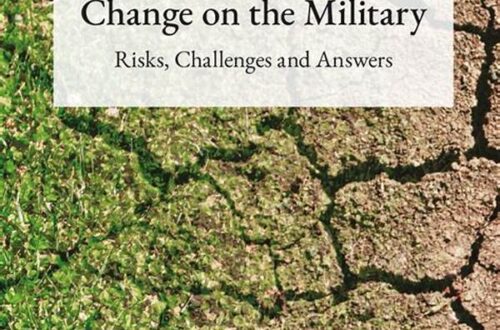The Role of Alliances in Shaping Global Power
In recent decades, the framework of international relations has been significantly influenced by both alliance dynamics and international power distribution. Alliances, whether formal or informal, have the potential to mold geopolitical landscapes, thus redistributing power on a global scale. With the advent of multipolarity, where power is not focused in one or two states but dispersed amongst several, alliances have become a critical mechanism through which nations can amplify their influence. The functions of these coalitions are manifold, comprising mutual defense pacts, economic agreements, and the facilitation of shared technological growth. Consequently, the crafting and dissolution of alliances directly affect global power distribution by recalibrating the balance of power and enabling states to achieve synergistic benefits that they could not attain independently.
Alliance dynamics and international power distribution are inextricably linked, with the rise and fall of alliances influencing the shifting sands of global power. Fundamentally, alliances serve as a counterbalance to the traditional hegemony of powerful nations by encouraging cooperation across a diverse array of smaller states that might otherwise lack a voice. Through alliances, states can attain greater strategic depth, allowing them to project power in regions typically dominated by more powerful adversaries. As a result, the dynamics of alliances contribute to a rich tapestry of international interaction, wherein power is dynamically distributed based on cooperative relationships rather than sheer dominance.
The concept of alliance dynamics not only underpins the strategic goals of states but also suggests a more complex interplay of power distribution across various sectors. This complexity emerges from the diverse nature of alliances, ranging from military cooperation to economic collaborations and political agreements. Such alliances ensure that international power distribution is not merely a function of a state’s military might or economic clout but a composite of several factors, yielding a multi-layered global power structure.
Exploring Alliance Dynamics and International Power Distribution
1. Alliance dynamics significantly contribute to the flux in international power distribution, as the formation and dissolution of partnerships alter geopolitical influence. Alliances enhance collective security, enabling states to deter external threats and contribute to a balanced distribution of power globally.
2. As alliances form, power dynamics can shift, granting smaller nations enhanced influence vis-à-vis more significant powers. By fostering cooperation across various dimensions, alliance dynamics enable a recalibration of international power distribution, sustaining global stability.
3. The strategic crafting of alliances facilitates a redistribution of power, orchestrating a transition from hegemonic controls to a more balanced international order. This fosters a milieu in which alliance dynamics critically impact international power distribution, allowing for adaptive geopolitical frameworks.
4. Through the lens of international relations, alliance dynamics promote a multiplex understanding of power distribution by endorsing inclusivity across geopolitical interests. The heterogeneity of alliances enhances the global power equilibrium, suggesting an interdependent paradigm of international relations.
5. Alliance dynamics and international power distribution are pivotal components in the contemporary geopolitical landscape, as they influence cooperation, conflict resolution, and the advocacy of shared interests. This complex symbiosis underscores the pragmatic rationale behind state-led partnership initiatives.
The Interconnection of Alliances and Global Power
The interrelationship between alliance dynamics and international power distribution constitutes a central theme in the analysis of global politics. Beyond the immediate strategic benefits, these alliances also dictate long-term power shifts by redefining international norms and the rules of engagement. It is imperative to acknowledge how alliances contribute to both stability and unpredictability within the global order. Stability is often achieved through the collective security that alliances provide, which can deter aggression from opposing factions and prevent unilateral action by dominant states. Conversely, unpredictability may arise due to the volatile nature of alliances themselves, which can be subject to rapid changes in state interests and leadership.
Furthermore, international power distribution is not a static phenomenon but is continually evolving as alliances emerge, mature, and sometimes dissolve. This evolution is marked by a continuous recalibration of power, where states either rise or fall in global influence depending on their strategic alliances. Their ability to navigate this complex landscape is often dependent on the astuteness with which they engage in diplomacy and forge alliances that enhance their global standing. The inherent complexity of alliance dynamics adds layers to international power distribution, making the system inherently resilient yet susceptible to disruptions.
Complexity in Alliance Dynamics and International Power Distribution
The operation of alliance dynamics within the global arena involves numerous factors that collectively alter international power distribution. These factors include geopolitical interests, cultural alignments, economic interdependence, and military cooperation, each contributing uniquely to the overarching structure of global power. The intricate nature of these alliances enables participating states to leverage collective strategies that enhance their individual capacities while impacting the balance of power.
1. Geopolitical interests necessitate alignment across national borders, fostering strategic alliances that comprehensively restructure international power dynamics.
2. Cultural alignments provide a social foundation upon which alliances can thrive, further influencing international power distribution by fostering shared values.
3. Economic interdependence serves as an incentive for states to form alliances, stabilizing power distribution through enhanced economic cooperation and mutual growth.
4. Military cooperation underscores the importance of security-focused alliances, which redistribute power by strengthening collective defense capabilities.
5. The global political economy is influenced by alliance dynamics, which impact trade policies and international market access, ultimately affecting global power distribution.
6. Alliance dynamics contribute to conflict mediation and peacekeeping efforts, redistributing power through diplomatic engagements and multilateral initiatives.
7. Technological advancements and cybersecurity collaborations contribute to power shifts facilitated by alliances, impacting international security norms.
8. Environmental alliances reinforce cooperative efforts to address global challenges, redistributing power in areas of sustainable development and resource management.
9. Non-state actors and international organizations play prominent roles in alliance dynamics, influencing power distribution through cooperative engagement with states.
10. Diplomatic dialogues initiated within alliance frameworks facilitate a progressive international power structure, enhancing global governance.
Broader Implications on International Politics
Alliance dynamics and international power distribution resonate far beyond mere state-level interactions; they fundamentally impact broader international political landscapes. The global implications of these dynamics posit challenges and opportunities for the international community, enhancing interactions beyond conventional power struggles to encapsulate cooperative diplomacy. This cooperation facilitates collective action on global issues, such as climate change, terrorism, and public health threats, where collaborative efforts are necessary to attain common goals.
The architecture of international politics has become increasingly complex, with alliance dynamics frequently catalyzing shifts in global power distribution. Multipolarity inherently demands that states navigate complex networks of alliances that shape global interactions. This necessitates a heightened level of diplomatic skill, as states must artfully balance their commitments and strategic goals within the broader tapestry of international relations. Thus, the alignment of national interests through alliances underscores both the modularity and adaptability of contemporary power distribution on the world stage, highlighting the importance of alliances as fundamental components of international relations.
Strategic Outlook on Future Alliances
As the world navigates through an era of rapid technological advancement and evolving geopolitical tensions, the future trajectory of alliance dynamics and international power distribution remains a focal point for strategic analysts. The increasingly interconnected nature of global affairs implies that alliances will continue to play pivotal roles in shaping the power equilibrium of the 21st century. Geopolitical shifts, such as the rise of new influential states and shifts in global economic power, will necessitate a constant re-evaluation of existing alliances and the formation of new ones.
Facing an uncertain future, states will likely pursue more flexible, issue-specific alliances, which can address emerging global challenges with precision. The dynamic nature of international power distribution, shaped by these alliances, will thus foster adaptability and resilience within the international system. The role of multilateral institutions and regional organizations will become even more pronounced as facilitators of dialogue and cooperation, offering platforms for resolving differences while reinforcing the multilateral frameworks essential for maintaining global stability.
Concluding Insights on Alliance Dynamics
In conclusion, alliance dynamics and international power distribution remain integral to understanding the intricacies of global politics. The interplay between power structures and cooperative alliances determines the strategic environment in which states operate. Among the key elements that influence international power distribution are the evolving nature of state interests, the strategic objectives shared by allied nations, the continuous recalibration of global power structures, and the impact on regional and international stability.
These elements collectively shape a multilateral world order characterized by a multiplicity of actors engaging through cooperative alliances to achieve common objectives. As countries navigate this complex landscape, the significance of alliances in achieving a balanced power distribution cannot be understated. Through thoughtful engagement and strategic diplomacy, states can better address global challenges, ensuring a stable and enduring international order that benefits from the symbiotic relationship between alliance dynamics and power distribution in the international arena.





